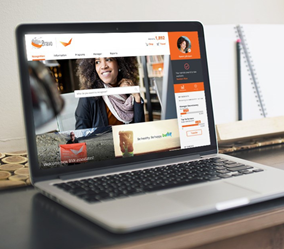4 ways to monetise the behaviours of your customer lifecycle
If your loyalty program is unique and has created differentiation in the marketplace, you already know which behaviours will motivate your customers.
Here are 4 ways to monetise those actions at the programme and individual-behaviour levels of your customer lifecycle.

Everybody’s heard that it’s cheaper to keep an existing customer than to win a new customer. So, generating loyalty amongst customers makes sense. It sounds like a straightforward objective, and it’s easy to assume that because a customer is loyal, they’re more valuable than other customers. And who wouldn’t want more valuable customers?
And yet, loyalty is nebulous, especially today when there are so many poorly designed programmes in the market. When you’re pressed to prove the value of your programme, you should be ready with not only the impact you’ve generated by motivating behaviours, but also the monetary value of those behaviours.
Monetising the behaviours within your customer lifecycle will help determine the most profitable behaviours of your most profitable customers. Where possible, the value of each behaviour needs to be higher than the cost of the reward or motivator necessary to drive the behaviour. More importantly, the value of the overall programme needs to be higher than the cost of the rewards required to drive the necessary engagement tied to loyalty.
For example, if you’re looking to retain customers, you should know the behaviours that impact retention and what those behaviours are worth. Some tactics are simple to monetise. Sending a surprise-and-delight kit to customers who are nearing the end of their purchase cycle prompting them to re-purchase has hard costs (e.g., the cost of the kit plus shipping) and is simple to measure (e.g., the retention rate post-campaign). Other tactics can prove challenging to monetise, like how much it’s worth for your customer to visit your website once a month instead of once a year.
In general, there are two ways to approach monetisation: programme-level impact and behaviour-level impact. Programme-level metrics are longer term in nature and require patience. In some cases, they can take up to a year for a first look and it can take several more years to see true impact. These are things like retention and lifetime value. Behaviour-level impact can be monetised early so you can get some quick wins and identify leading indicators. These are things like downloading an app, driving continuity or social sharing.
So, how do you go about monetising the behaviours of your customer lifecycle?
Here are some examples:
1. Continuity / Habits:
For a traditional loyalty programme, the most important metrics are transactional, which you can measure right away. Transactional loyalty programmes are looking to establish habitual behaviours by motivating purchases over and above routine purchases. Increased ticket average, increased frequency, or trials across products/service categories are easily monetisable and can lead into measuring continuity. Ordering from an app or increasing basket size can also monetise the behaviours surrounding a transactional loyalty programme.
2. Lifetime Value (LTV)/Retention:
Equally as critical is LTV. A longer-term metric that requires patience, especially if you’re looking at the lifetime of the product or service and/or the lifetime of a customer. If you land on years as a customer to determine LTV, then monetising by relationship-year clusters will describe the impact of your loyalty initiatives. Monetising behaviours can pulse check at much shorter intervals.
3. Behaviour-level:
Whether you need to acquire customers or retain them, milestones across the lifecycle can be monetised. Downloading an app, participating in learning activities, engaging with a newsletter, or providing data all have a monetary value and can be measured early and often. Locating behaviours can be easy, but landing on a value will take effort, and the value could evolve over time.
4. Channel Loyalty:
When we consider loyalty specifically within a channel, all the above apply but additional consideration must be given to the often complex ecosystem that exists. The lifecycles are different.
To monetise channel loyalty behaviours, you must also:
- Understand behaviours across the ecosystem
- Know what’s controlled vs. non-controlled within the ecosystem
- Accept that data is highly valuable—gathering data should have a high price tag
__________
If your loyalty programme is unique and has created differentiation in the marketplace, you already know which behaviours will motivate the most customers or channel segments across the customer lifecycle. Once you monetise those behaviours, you’ll be able to prove, again and again, the true impact of your efforts.
__________
Written by: Drew Marquesen, Sr. Loyalty Strategist, Customer Engagement Group
How we can help?
At BI WORLDWIDE, our strategies for employee engagement transform the way managers inspire, motivate and connect with their employees, so you can ensure that your employees feel supported when they plan to take smart risks or make mistakes. Please get in touch today!
Want to know more?
Learn more about BI WORLDWIDE and how we can support you. Get in contact today!













